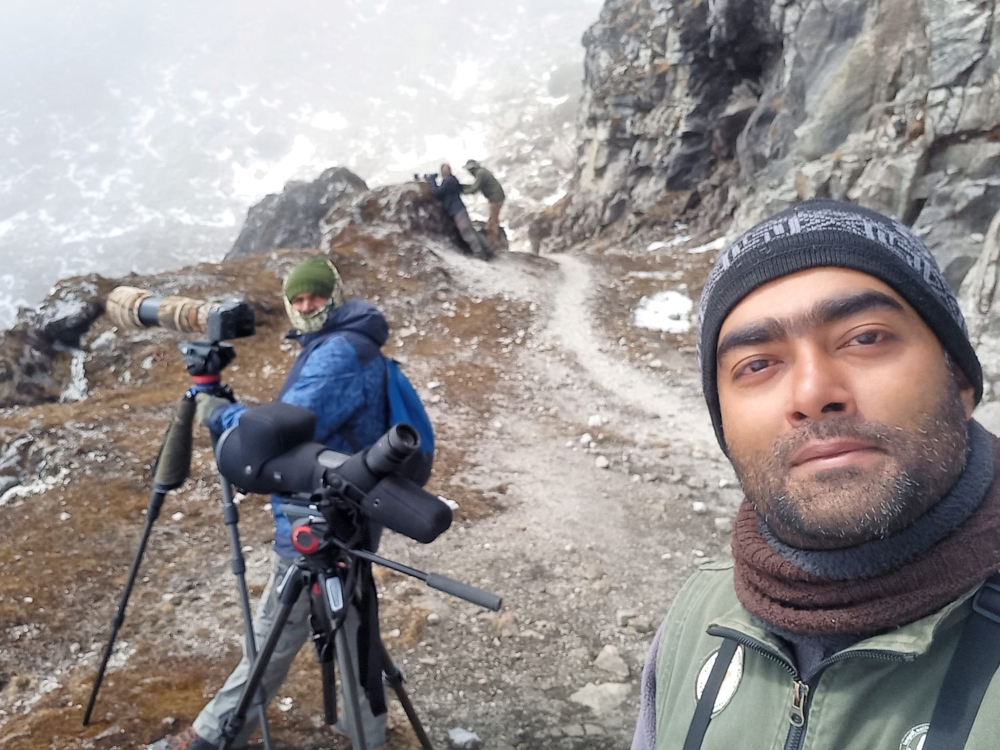
What is your favorite bird species?
It might not have a very straightforward answer. I love to see and show the most challenging ones to my guests. Amongst all the bird species from the Himalayan region, my favorite group is the Timaliidae babblers and Pheasants. Above all, the most phenomenal one to select – Bugun Liocichla. This skulker stays in a mixed flock with other Timaliidae groups. The beautiful vocalization that it makes lures all the birdwatchers towards it. It is estimated that there are roughly 70 to 100 individuals left. Found only in two isolated pockets in the West Kameng district of Arunachal Pradesh in India – Lama Camp and Bompu Camp.
What is your name, and where do you live?
Dibyendu Ash, Sikkim, India.
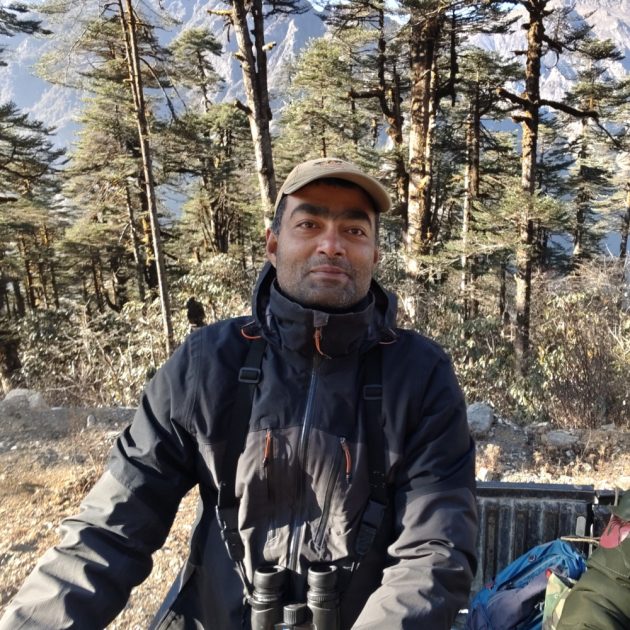
What are the main regions or locations you cover as a bird guide?
I cover Sikkim and the surrounding north-east Indian states like Arunachal Pradesh, West Bengal, Assam, Meghalaya, Nagaland, Manipur, and Mizoram. I also guide for the neighboring Himalayan countries like Bhutan, Nepal and China.
How long have you been a bird guide?
I have been guiding since 2012
How did you get into bird guiding?
I am a registered electrical engineer by qualification and worked in the corporate arena for a few years. I then discovered my affinity towards nature and wildlife from 2002 on. However, the workload didn’t allow me to frequently venture into the wilderness due to my tight work schedule, though I managed to explore much of the Himalayan region. I finally decided to follow my passion, quit in 2012, and started my career as a freelance bird guide.
What are the aspects of being a bird guide that you like best? Which aspects do you dislike most?
Now I am living my life and having the best of my days. The profession takes me to the remotest of Himalayan valleys and villages. Eventually, I am engaged in a very healthy and stress-free lifestyle, which was not possible if I were in corporate affairs. Nothing to complain or dislike about being a bird guide.
What are the top 5-10 birds in your region that are the most interesting for visiting birders?
There are many birds that are prime targets when people come to do birding in the Himalayan Mountain Range. I chose 10 birds in the region I cover.
Grandala
Found chiefly at high elevation at or above 3000 meters all across the Himalayas. The most sought-after males have a brilliant blue radiance. In the winter months, we encounter more than 300 birds in a single flock, foraging on Seabuck thorn bushes. The mesmerizing murmuration is also a splendid sight in the early morning in the subalpine and alpine meadows.
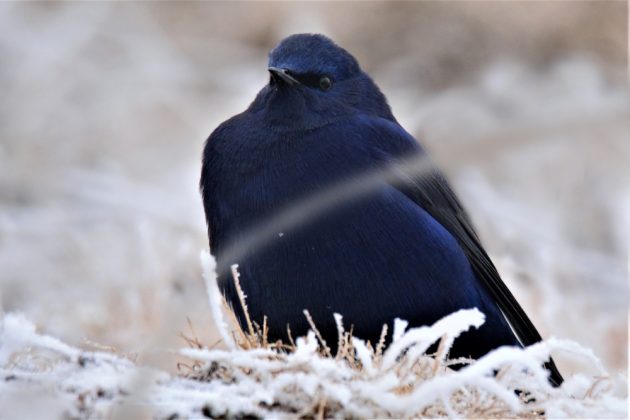
Blood Pheasant
The state bird of Sikkim – Blood Pheasant, is a very well distributed species across Nepal, Sikkim, Bhutan, and Arunachal Pradesh mountains. Across this range, there are thirteen/fourteen subspecies, all of which are very different and unique. Sometimes we come across more than 15 individuals foraging on meadows, feeding close to yak herds.
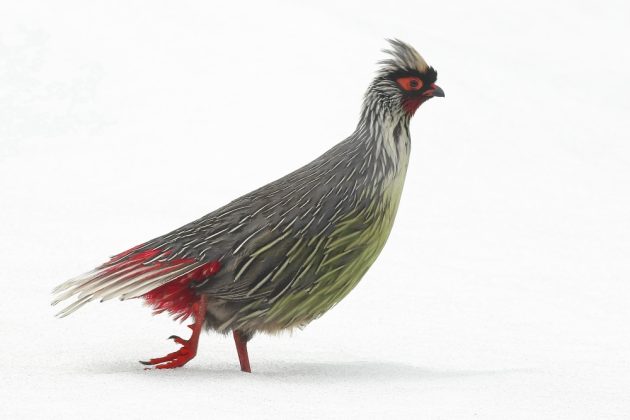
Marsh Babbler
A tremendous skulker found along the flood plains of the Brahmaputra, resides in the marshy swamps covered by tall reeds and grass. Most of the places are unapproachable due to natural swampy barriers. However, there are some buffer regions at the edges of grasslands, close to motorable roads, where we can spy on them.
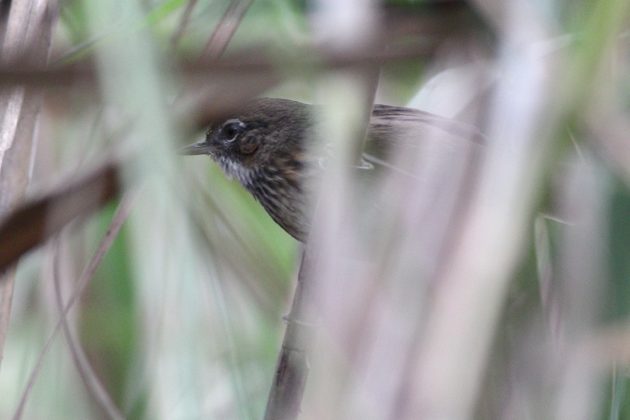
Ward’s Trogon
It is very well distributed across Sikkim, Bhutan, Arunachal Pradesh, Northern Myanmar, and the adjacent bordering China Hills. Mostly we hear them in early Summer and observe a sudden flying flash of Red or Yellow at the tropical moist oak-rhododendron forest. Tracking this bird is real fun, as we walk through gullies and ridges of the dense forest and finally spot the brilliantly colored bird perched atop. Though well distributed, the mountain range of the Himalayas itself has lots of obstacles to penetrate. Thus, most of the sighting spots are very local.
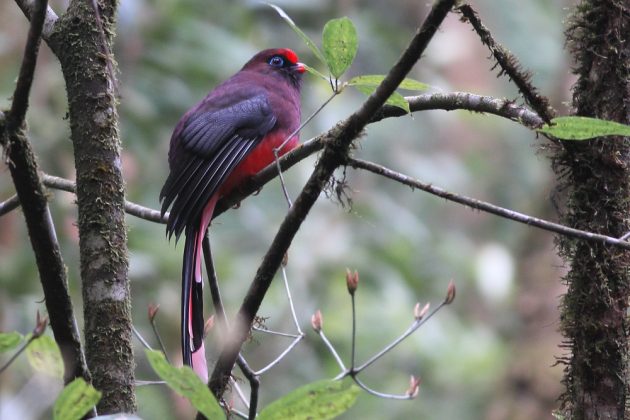
Sikkim Wedge-billed Babbler
The nettle thorn shrubs are the preferred habitat for this species, and the place should be adjacent to natural mountain streams. Very early in the morning and late afternoon, we mostly hear them. But getting these nasty skulkers out in the open is a real challenge.
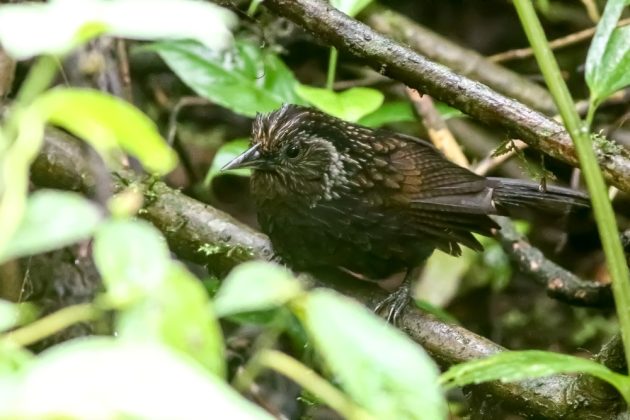
Temminck’s Tragopan
If there are the top 10 birds to see around the world, Temminck’s Tragopan would definitely be one of those. The bird is found in the eastern Himalayan ranges at relatively higher elevations at 3000 meters, i.e., above the distribution ranges of the other two tragopans.
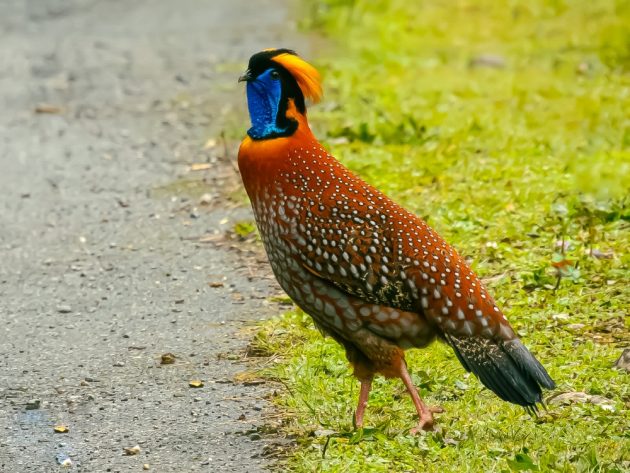
Himalayan Owl
There are multiple bird species that we target during the nocturnal bird safari. However, amongst all of those Himalayan Owl stands out to be the most demanding species. The large owl has a very deep hooting sound, which echoes in the woodland.
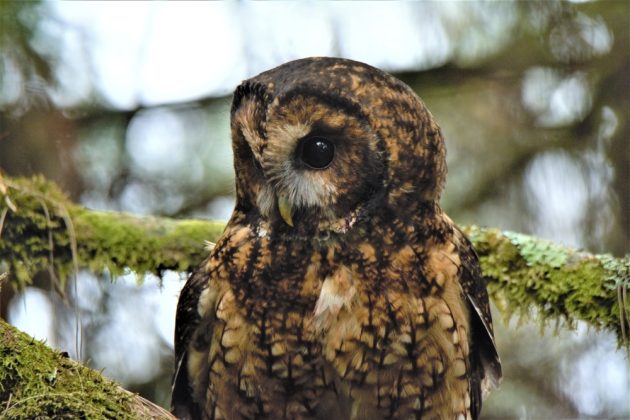
Purple Cochoa
The forests of Sikkim, Bhutan, Arunachal Pradesh, and Nagaland host this rare bird species. They are mostly vocal in summer, between April to June, and we see them in a mixed flock of Himalayan Cutia, Shrike-babblers in winter months. The shrill-sounding individuals can be heard, but spotting them at the perched branch requires specialization.
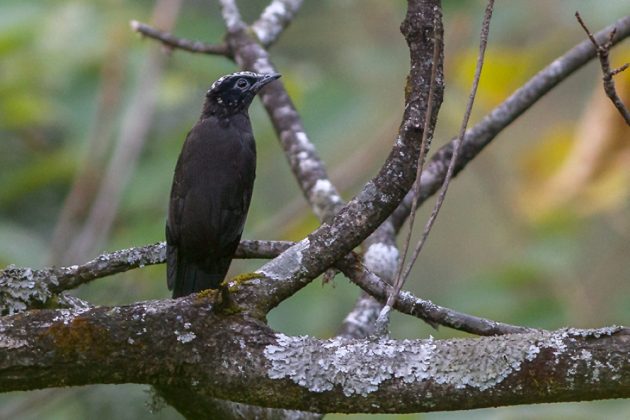
Great Parrotbill
One of the loudest bird species from the Malingo bamboo forests of the eastern Himalayan range. This unusual-looking babbler comes under the parrotbill group because of the shape of its bill. Their heavy bills are capable of breaking the bamboo nodes, and they feed on the inner soft core of the bamboo.
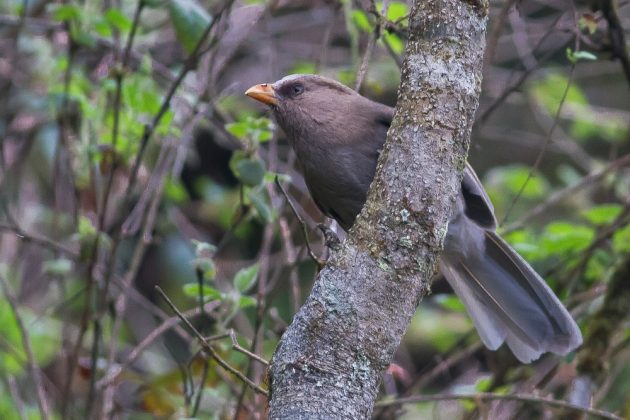
Mountain Bamboo Partridge
The Naga Patkai range in northeast India is also known as the Purvanchal mountain range, which extends into Myanmar further south. The dwarf bamboos that shoot out from these hill slopes are the home of the Mountain Bamboo Partridge. During our birding days, very early in the morning, we sometimes experience multiple flocks of Mountain Bamboo Partridges foraging just next to the driveways.

Can you outline at least one typical birdwatching trip in your area? Please briefly describe the locations, the key birds, and the approximate duration of such a trip
- Itinerary 1: Sikkim & North Bengal (Darjeeling-Kalimpong Hills) can be covered in 15 days, and the best time in summer is March to June, and in autumn, from September to November. Birds to see – Satyr Tragopan, Ward’s Trogon, Slender-billed Scimitar Babbler, Himalayan Cutia, Rufous-necked Hornbill, Great Parrotbill, Grandala, Blood Pheasant, Hodgson’s Frogmouth
- Itinerary 2: Upper Assam and Eastern Arunachal & Nagaland can be chosen for 10 days, and the best time is winter, between November to February. Birds to see – Blyth’s Tragopan, Cachar Wedge-billed Babbler, Snowy-throated Babbler, Marsh Babbler, Jerdon’s Babbler, White-bellied Heron, Oriental Hobby, Beautiful Nuthatch, Rufous-headed Parrotbill, Manipur Fulvetta, Mishmi Wren Babbler, Naga Wren Babbler, Dark-rumped Swift, Gray-sided Thrush, Crested Finchbill
- Itinerary 3: The best of eastern Himalayas and northeast India covering Eaglenest Wildlife Sanctuary, Kaziranga National Park, Gibbon Wildlife Sanctuary, and Mishmi Hills – 25 days, and the suggested season is March to May. Birds to see – Temminck’s Tragopan, Beautiful Nuthatch, Sikkim Wedge-billed Babbler, White-browed Tit-warbler, Grandala, Snow Partridge, Ward’s Trogon, Himalayan Shortwing, Gould’s Shortwing, Tibetan Blackbird, Great Parrotbill, Blyth’s Tragopan, Slender-billed Vulture, Spot-bellied Pelican, Dusky Eagle Owl, White-rumped Vulture, White-tailed Eagle, White-hooded Babbler, White-bellied Parrotbill, Pale-billed Parrotbill, Rusty-bellied Shortwing
- Itinerary 4: Cross Country Bhutan Birding Trip – for 20 days, and the best time to bird here is between September to November, and March to June. Birds to see – Blood Pheasant, Satyr Tragopan, Blyth’s Tragopan, Temminck’s Tragopan, Himalayan Monal, Yellow-rumped Honeyguide, Red Crossbill, White-bellied Heron, Black-rumped Magpie, Red-billed Magpie, Ward’s Trogon, Beautiful Nuthatch, Sikkim Wedge-billed Babbler
What other suggestions can you give to birders interested in your area?
We from Sikkim Birds Tours & Travels share the tour-specific things to bring, as the weather in the Himalayas changes from season to season. In monsoon, leech socks, rain coats, and waterproof gear are always suggested to bring. Whereas in winter months, heavy jackets are necessary while we are birding in alpine and subalpine regions. In summer, the flood plains of Assam are very hot and humid; thus, cotton shirts are suggested.
If any readers of 10,000 Birds are interested in birding with you, how can they best contact you?
- The best way to connect is just sending an email to birdsofsikkim@gmail.com or via WhatsApp at my primary number +91 7003389381
- However, if you are interested, you can get connected with me through the channels mentioned below as well:
- Whatsapp: +91 7003389381 or +91 9681417974
- Facebook: Dibyendu Ash (Sikkim Birds)
- Instagram: himalayanbirder
- E-mail: birdsofsikkim@gmail.com
- For Birdwatching Enquiries: info@sikkimbirds.com
- Website: www.sikkimbirds.com
Is there anything else you would like to share with the readers of 10,000 Birds?
Do birding for yourself, for your family, and create a safe and secure world!






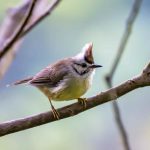


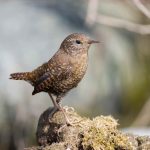
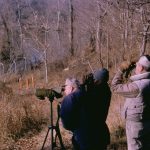


Leave a Comment